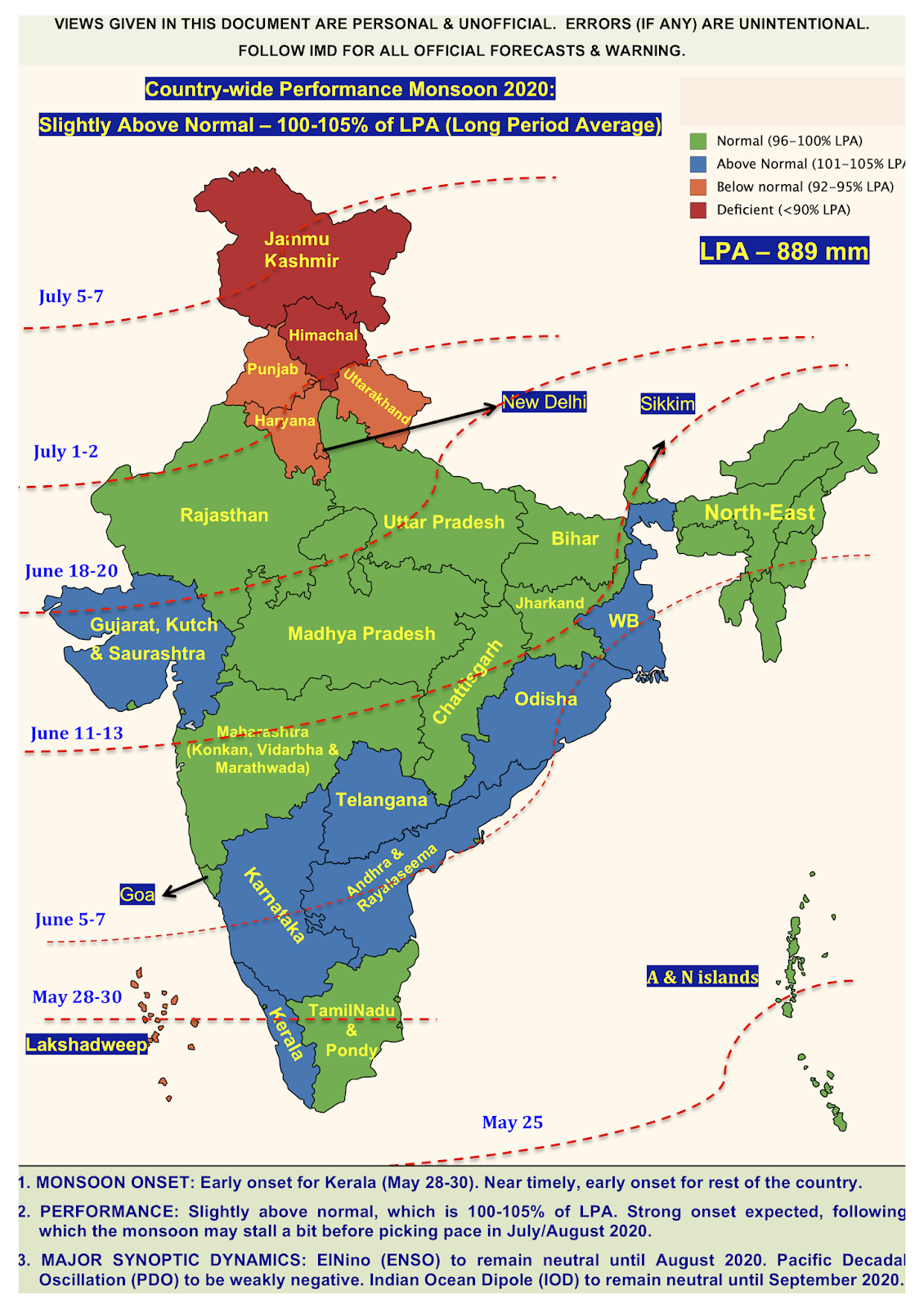Bountiful start to monsoon 2018 for Kerala & Karnataka

The early onset of 2018 monsoon season was in itself a welcome news for south peninsular India, which has been experiencing below average monsoon for quite sometime now (2015, 2016 & 2017). The icing on the cake has been the torrential downpour from the start of the monsoon season up until now, where almost all the stations in Kerala, South coastal Karnataka, Nilgiris and adjoining areas have recorded excess rainfall, with some stations recording large excess (on the right season's rainfall for Kerala is shown, source IMD). While overall this is a great beginning, with record rainfall activity in these places, there is always a downside to such bountiful monsoon showers, that being - floods, loss of lives, overflowing reservoirs, and damage to infrastructure. To a large extent, we could blame these punitive damages to lack of proper government planning during monsoon period, where proper care should be taken for tropical countries, which shoulder the wrath of monsoons, but at the same time, most of us quickly jump to put the blame on Climate Change. Before doing that, we need to pause and understand the dynamics of such rainfall activities.
Extreme rainfall activity is no stranger to equatorial climate, which is a hot spot for various synoptic scale phenomenon (such as Walker cell, Tropical jets, MJO etc.). This coupled with low pressure systems or depressions activate the monsoon rainfall over India. Historically, the well marked low pressures and depressions in the Bay of Bengal are responsible for a chunk of rainfall during the entire monsoon period. The rest comes from the low pressures/depressions in Arabian Sea or the ones that form over land. (Note: For a monsoon season, typically anywhere between 10-15 active systems form including those over Bay of Bengal, Arabian Sea, and land). Over the past years (2015, 2016, and 2017), the number of depressions in the Bay of Bengal have been less, which have resulted in deficit rainfall over Kerala, South Interior Karnataka, Coastal Karnataka, Interior TamilNadu, Marathwada, and Madhya Maharastra. The Arabian Sea systems have somewhat made up for the deficit caused by the fewer number of depressions in the Bay, but obviously it cannot help meet the ends. This shows the importance of the Bay of Bengal on the Indian climate.
The story has been different this year, where already we have had two depressions in the Bay of Bengal since the onset of monsoon. The first one formed around 28th May, which went on to give heavy rainfall over Coastal Karnataka, South Interior Karnataka, and Kerala (see the black and white image - courtesy Meteologix).
 Following this system, another well marked low (WML) formed in the Bay on June 8th, which was upgraded to a depression (see the bottom image - courtesy tropicaltidbits.com, which upload the model outputs from open source GFS model).
Following this system, another well marked low (WML) formed in the Bay on June 8th, which was upgraded to a depression (see the bottom image - courtesy tropicaltidbits.com, which upload the model outputs from open source GFS model).
This resulted in a second bout of heavy rainfall over Kerala, South interior Karnataka, and coastal Karnataka. In fact, these two systems have already created a flood-like situations in many districts, and the reservoirs are also reaching the limit, triggering release of water from these reservoirs.
 The June 8th, system was also influential in bringing rainfall to whole of Konkan coast, covering Goa, Mumbai, Ratnagiri, and surrounding districts. The reason for heavy rainfall in Konkan coast from June 8th to June 10th was the formation of a monsoon vortex, which kept switching north and south (under the influence of the depression in Bay of Bengal). (see the bottoms image - courtesy Meteologix).
The June 8th, system was also influential in bringing rainfall to whole of Konkan coast, covering Goa, Mumbai, Ratnagiri, and surrounding districts. The reason for heavy rainfall in Konkan coast from June 8th to June 10th was the formation of a monsoon vortex, which kept switching north and south (under the influence of the depression in Bay of Bengal). (see the bottoms image - courtesy Meteologix).
I would like to leave you all with a thought - in my opinion, these depressions in the Bay of Bengal and Arabian Sea have been a common feature even before the climate change talks came into picture. Therefore, anytime an extreme event happen, we blame it on climate change without probing into the dynamics of the flow and if such a dynamic event is a common occurrence during that month or season. Probably, such intense spells of rainfall were common one or two decades back, and our ecosystem was able to handle it. Probably, the change in the ecosystem (deforestation, development of forest, concrete jungle etc.) has lead to the magnification of disaster due to these extreme activities. Therefore, although climate change is one of the reasons, it is not the sole one.
The final question that one could ask is - What has lead to the reduction of depressions in the Bay of Bengal? Can we blame it all on Climate change? - I don't think so. I think it is a sum total of the abuse that Mother Earth has been shouldering over the past few decades!
Disclaimer: The content given here are all personal views and the author will not be held responsible or held liable for any oversight or misinterpretation.




Comments
Post a Comment